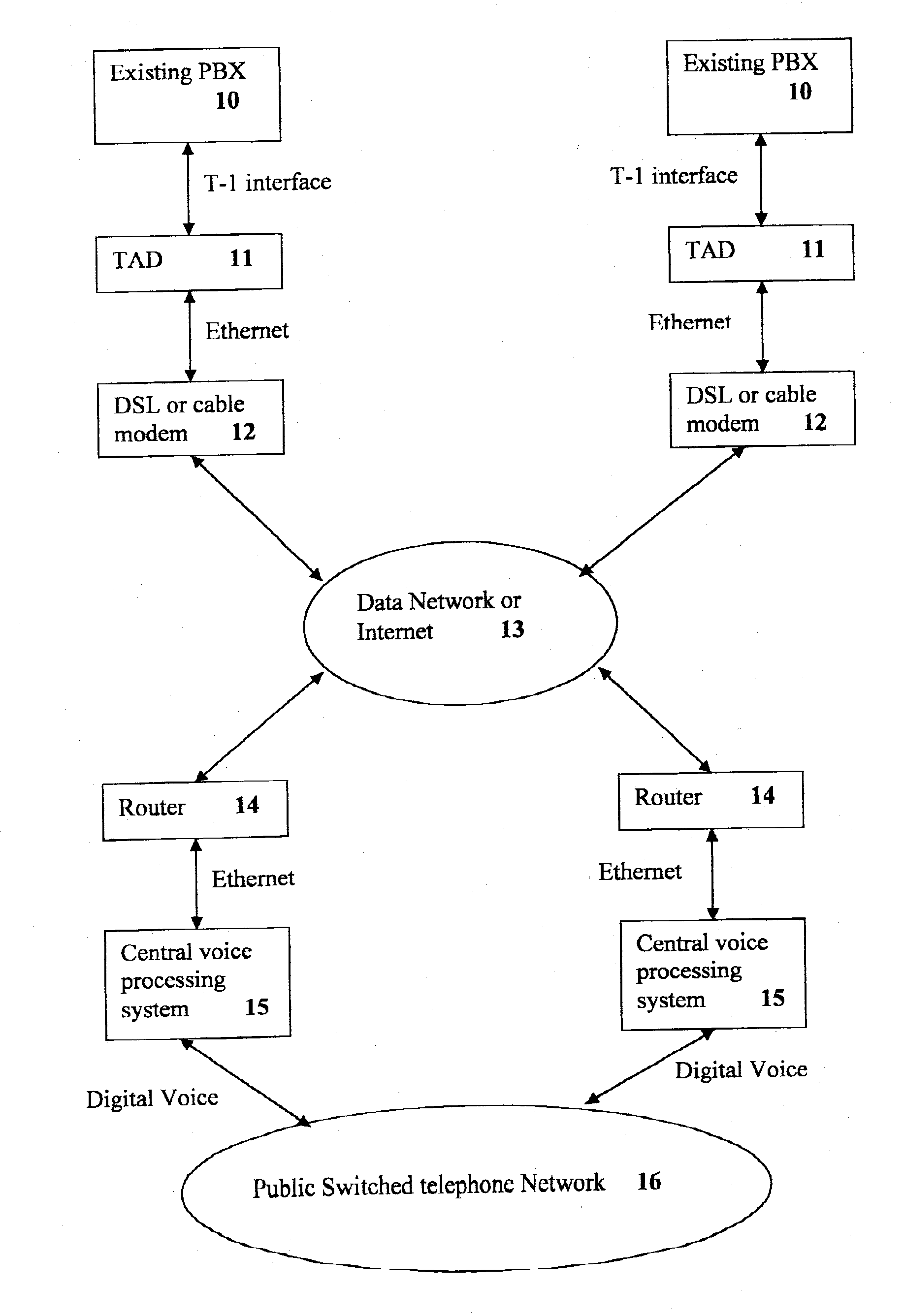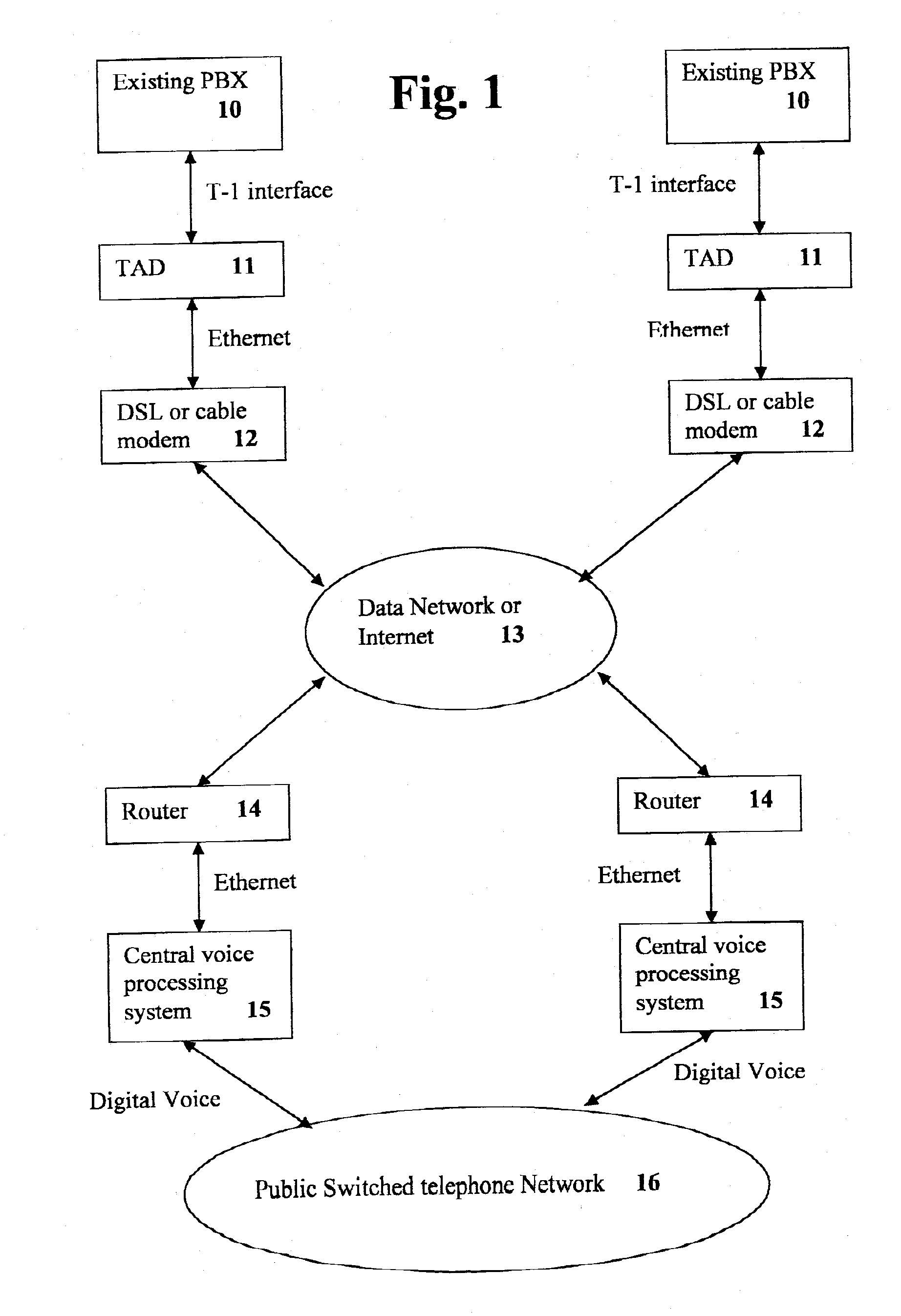Voice over internet protocol system and method for processing of telephonic voice over a data network
a voice over internet protocol and data network technology, applied in the field of communication, can solve the problems of unencrypted calls, traditional voip methods have a difficult time tolerating the additional latency of encryption/decryption processes, etc., and achieve the effect of real efficiencies of voip, low overhead, and small sideband signaling protocol
- Summary
- Abstract
- Description
- Claims
- Application Information
AI Technical Summary
Benefits of technology
Problems solved by technology
Method used
Image
Examples
Embodiment Construction
[0027]FIG. 1 illustrates the system of the present invention, with the TAD (targeted access device) located at each remote location. One or more existing PBX 10 (private branch exchange) are connected to a TAD device 11 by means of a T-1 interface. The TAD device 11 is connected to a DSL or cable modem 12 through an ethernet system. The DSL or cable modem 12 is connected to a communication system 13, such as, for example, a data network or the Internet. A public switched telephone network (PSTN) 16 communicates digital voice signals to one or more central voice processing systems 15. The central voice processing system 15 transmits voice signals to router 14 over an ethernet system, and the router 14 interfaces with the communication system 13.
[0028]FIG. 2 depicts the data flow processes necessary for the placement of a call out from the local PBX. When a channel on the T-1 interface to the PBX “goes high” (20) this indicates an off-hook event. The T-1 interface in the present devic...
PUM
 Login to View More
Login to View More Abstract
Description
Claims
Application Information
 Login to View More
Login to View More - R&D
- Intellectual Property
- Life Sciences
- Materials
- Tech Scout
- Unparalleled Data Quality
- Higher Quality Content
- 60% Fewer Hallucinations
Browse by: Latest US Patents, China's latest patents, Technical Efficacy Thesaurus, Application Domain, Technology Topic, Popular Technical Reports.
© 2025 PatSnap. All rights reserved.Legal|Privacy policy|Modern Slavery Act Transparency Statement|Sitemap|About US| Contact US: help@patsnap.com



